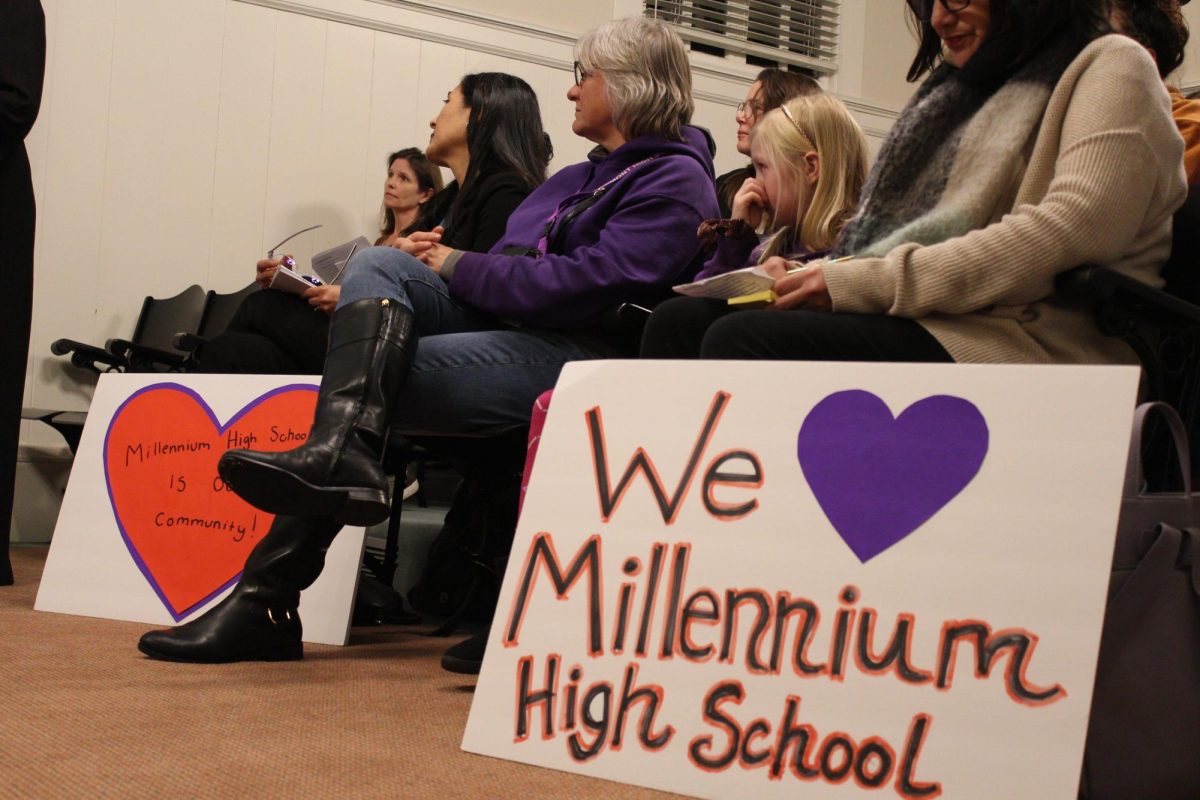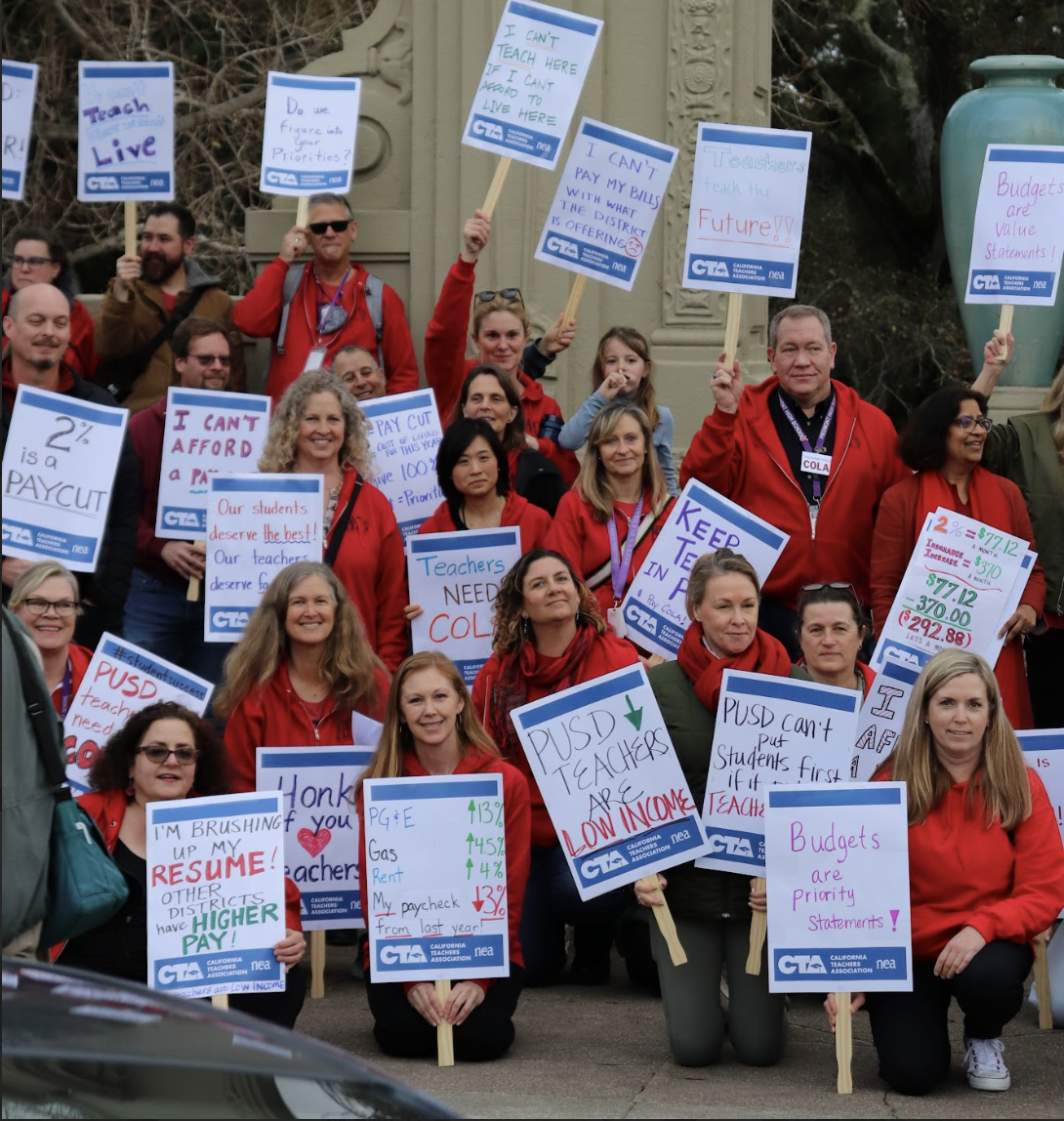It’s hard to believe that Piedmont, a town where a sandwich shop is the pinnacle of the culinary scene, is part of a hotbed of culinary activity and the unique food culture in the San Francisco Bay Area.
In 2015, the Michelin Guide, an influential annual publication that acknowledges excellence in fine dining across the world, awarded 54 total Michelin stars to restaurants in the San Francisco Bay Area.
In addition, the Bay Area has the most eateries per capita of any metropolitan area in the United States, with 21.44 per 10,000 people, according to Bloomberg.
“We’re so incredibly lucky, not everywhere has food like we have food,” Piper Cafe chef M’Lisa Kelley said.
CALIFORNIA CUISINE
“We have a culture that is so close to the grower, so enmeshed with the farming community, so in tune with seasonality, that those things are almost not special for us anymore because it’s so much a part of the way we see food in the Bay Area,” Kelley said.
The origins of Bay Area food culture can be found in Berkeley, where in 1971 Alice Waters opened the restaurant Chez Panisse, pioneering the cooking style of California cuisine.
“[Waters] saw in France how close chefs were with the growers. Instead of entertaining people in your house, you went to a restaurant and used that as your living room and had meaningful conversations over good food. So when she opened Chez Panisse, she was looking to recreate that experience she had in France,” Kelley said.
Before the conception of California cuisine, the Bay Area food scene was dominated by Continental European cuisine, which is characterized by oily food and heavy sauces, said Kelley.
“The idea that the farmer, fisherman or rancher is a really important part of a dish at a restaurant, not just whoever cooked it, is still really popular,” said The East Bay Express’s food editor Luke Tsai. “And the idea that you can just take these really excellent ingredients and prepare them simply, just allow the quality of the ingredients to shine, started and was popularized in Berkeley, and now you will find restaurants all over the place that might call themselves farm-to-table or California style. It’s made the quality of food in America a lot better as a result.”
Seasonality is an integral part of California cuisine. Both Kelley and Tsai gave the example of berries and tomatoes: available all year round, even in the middle of winter, but at their best when in season.
For Kelley, the idea of seasonality is especially important when cooking for PHS students.
“For instance, this week, we just brought back the organic fruit salad, and I won’t do it when I can’t get berries that are organically grown from any other place but the Bay Area,” Kelley said. “I plan the menu three or four days in advance, it’s based on what I see when I go to the farmer’s markets on Saturday, what I talk to the farmers about. We’re in touch with that, and we’re the epicenter of that, I feel like it’s our responsibility to bring that food culture [to PHS].”
This attention to seasonality is the result of an abundance of produce, food writer Carolyn Jung said.
“We are blessed with an incredible climate, which means practically a year-round growing season,” Jung said. “We are spoiled by the wealth and breadth of fresh, seasonal, specialty produce that we can grow here and readily get our hands on. The rest of the country can only look on with envy, especially in winter.”
Unfortunately, the attention to California cuisine has resulted in a stereotype of the Bay Area’s food culture, Tsai said.
“The stereotype is that we just serve some beautiful figs on a plate, and we don’t do anything with that,” Tsai said. “People who don’t like it will say, ‘Oh, it’s not really cooking, it’s shopping.’”
SAN FRANCISCO VS. OAKLAND
Both Tsai and Jung cite one major difference between the sides of the bay: price. The average asking monthly rent rate per square foot of retail space in Oakland is $1.97 for 2015, while San Francisco’s is $3.82, according to LoopNet.
“Oakland is like the new Brooklyn — scrappy and with a lot of heart,” Jung said.
This difference in price leads to a more casual and creative restaurant scene in Oakland, Tsai said. Tsai gave POP Sandwich, a recently-closed deli in Oakland with plans to move to San Francisco, as an example. It served loosely banh mi-inspired sandwiches from the back of a convenience store.
“I see a lot of creativity in Oakland,” Tsai said. “They’re willing to take more risks and use a concept that seems like it won’t make a lot of money if they really believe in it.”
In addition to California cuisine and seasonality, another influence the Bay Area has had on a wider national scale is the introduction of tasting menus in fine-dining restaurants. Rather than traditional menus comprised of appetizers, entrees and desserts, tasting menus typically offer one or two options, each of which consists of any number of smaller dishes, often with wine pairings. The concept started at the French Laundry, a three-Michelin-star restaurant in Napa owned by Thomas Keller, Tsai said.
Tasting menus are an example of a trend that stuck and spread. Recently, a trend that may or may not stick was started in the Bay Area: putting dishes on carts, dim sum style, so that customers can look before choosing what to eat. Begun in State Bird Provisions, which won a James Beard award for Best New Restaurant in 2013, the trend has already been copied as far away as New York.
“Anytime you have a really successful restaurant or concept, people are going to copy it, but it takes time a period of time to decide if that’s something lasting or just a fad that’s going to pass after a couple of years,” Tsai said.
DIVERSITY
Compared to California cuisine, the diversity of the Bay Area has a larger impact on the food culture to Tsai. In 2014, Oakland was named the most diverse city in America with a population of greater than 400,000, according to Priceonomics.
“As a whole, I don’t know if there’s another city or metropolitan area in the country that rivals us in variety of and quality of international foods,” Tsai said. “All different kinds of ethnic cuisines — Asian, African, Latin American — you find such a wide variety [in the Bay Area], and people that are into food embrace that diversity. It makes the food culture much more interesting too because chefs who cook here have access to all this great ethnic food that introduces everyone to all these different ingredients, techniques and flavors that they then can incorporate into their own food.”
Tsai gave the example of a dish at The Dock, an Oakland restaurant by James Syhabout (who also operates Commis, the only Michelin-starred restaurant in Oakland). The dish was a corn dog made with linguiça sausage (common in Portuguese-speaking countries) and served with spicy pickled carrots and peppers in the tradition of what accompanies tacos at food trucks.
“Even in a single dish, you can see three or four food cultures, several of which that are prominent in the Bay Area, being fused together,” Tsai said. “That’s typical of what a lot of restaurants do here. It makes for some really interesting, original things that you wouldn’t find too much of outside of the Bay Area.”
All of these aspects of Bay Area food culture are what makes it so beloved by students, chefs, and food critics alike.
“[When I think about food culture in the Bay Area,] I think of driving down International Boulevard and hitting up one of my favorite taco trucks to get lengua, tripas or cabeza,” Tsai said. “The Bay Area food scene contains multitudes, it has a high end and a low end, it’s all good and interesting. The really good little noodle place, or little pupusa stand and the super accomplished chef — they’re equally important and equally a part of the Bay Area’s food culture.”








































